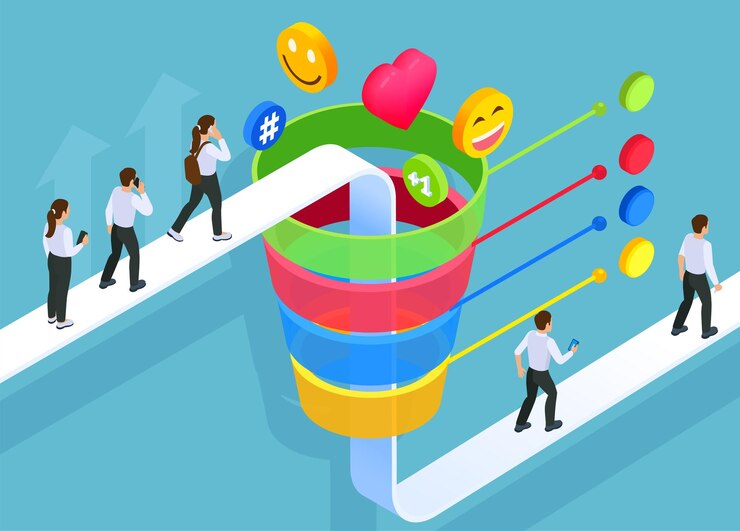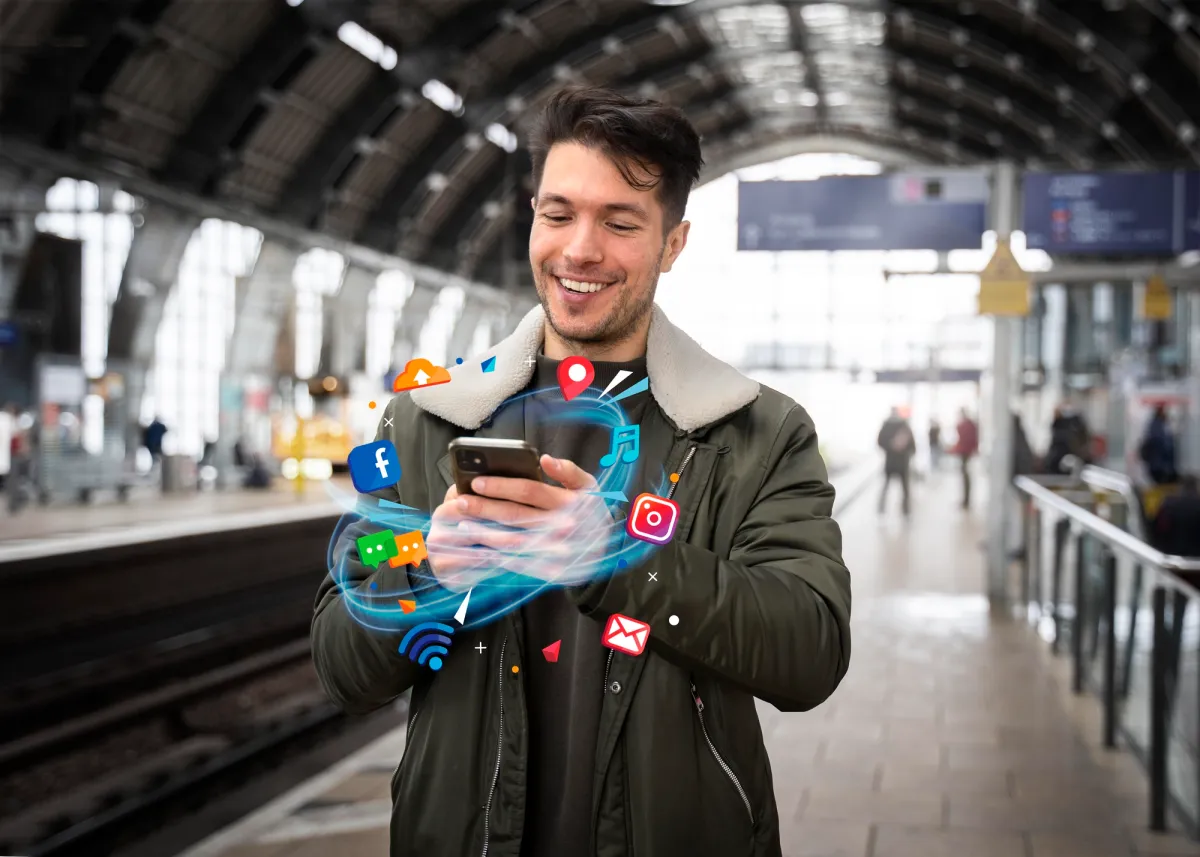Blog

Marketing Funnels: Social Media, Google Ads & Meta Ads
Imagine your ideal customer walking through a store. They might browse casually at first, then stop to examine a product and finally head to checkout. Or they may not buy anything and walk straight out. The marketing funnel works similarly, guiding potential customers through the stages of awareness, consideration and conversion (and hopefully, loyalty!).
A well-defined funnel helps you target the right message to the right person at the right time. It also helps businesses adopt a more customer-focused approach to marketing. Social media and paid social ads are a great way to do this. Here's how social media, Google Ads and Meta Ads (which include Facebook and Instagram Ads) can fuel your funnel.
Stage 1: Awareness — Broaden Your Reach
Stage one of the marketing funnel is all about grabbing attention and introducing people to your brand. This “problem-aware” stage focuses on acknowledging your audience’s problems and making them feel understood by your brand.
Social media shines here. Engaging posts, informative videos and eye-catching visuals can spark interest. If someone likes your post, they are more likely to share it, giving you expanded reach at no cost.
Facebook/Instagram Ads can help you target demographics and specific interests to reach potential customers who haven't heard of you yet. Social media competitions can also encourage user-generated content and spread brand awareness organically, for example, asking people to share your post and win a prize.
Google Ads can help here with Search, Display or Performance Max campaigns targeting audiences of cold users. With the help of a Google Ads specialist like our team at Allure, you can create targeted ads based on relevant search terms. For example, someone looking for "running shoes" might see your ad for your athletic brand. Ads tailored for this stage are an opportunity to address the potential customer’s problems.
Stage 2: Consideration — Nurture the Interest
Now that people know you exist, you want to show them why they should care. This is the middle stage of the marketing funnel: consideration, where you need to transform their fleeting awareness into genuine interest. Content with more depth comes into play at this stage, as social media evolves from a branding tool into a platform for education and engagement.
Use social media to share informative blog posts that delve deeper into your niche, establishing you as a leader in the field. You want to ensure you are publicly active, responding to comments and answering customer questions with helpful insights that showcase your expertise.
Don't shy away from detailed product demonstrations—visually appealing content that highlights features and benefits can be incredibly persuasive (at any stage, really).
At this “solution-aware” stage, it is your opportunity to present your brand as the solution to your audience’s problems. Blogs and case studies are among the most effective types of content you can put out at this stage, as they inform the user and answer their questions.
Google Ads are also an effective tool here, ensuring your business shows up when customers are searching.
Stage 3: Conversion — Make the Sale
This is the critical “brand-aware” stage - the bottom of the funnel - where potential customers become paying customers. You've nurtured prospects with valuable content (from the top of the funnel) and addressed their considerations (in the middle of the funnel). Now, it’s time to capitalise on their interest and nudge them towards a conversion. But, how?
Clear calls to action, benefit-driven messaging, and limited-time special offers on your socials—boosted with digital advertising. Remember, people are solution-oriented. Don’t be shy about emphasising the benefits they'll receive when they opt-in.
Replace a generic "Buy Now" with something like "Transform Your Business Today" or “Secure Your Spot!". These are examples of strong CTAs to include in your targeted social media ads, along with limited-time discounts.
For Meta and/or Google Ads, use remarketing to drive sales from those who haven’t yet converted by reemphasising your brand’s value. This allows you to stay top-of-mind with targeted ads, reminding them of the problem you solve and the benefits they'll receive by converting.
Stage 4: Retention — Keep Them Coming Back
The key to customer loyalty is always remembering your existing customers! Social media is a fantastic tool for nurturing loyalty and encouraging repeat business.
Share glowing customer testimonials that showcase the positive impact of your brand, offer a loyalty program that rewards repeat business, and run exclusive promotions for followers—anything to remind customers that you care about them and that your brand is a good fit for their needs.
But the nurturing doesn't stop there. Retarget paid ads to those who have already interacted with your brand online. These targeted reminders can spark their memory of the positive experience they had, enticing them to come back for more.
Ultimately, the retention stage is about building long-lasting relationships with your customers, ensuring they don't just buy once but become loyal brand advocates who rave about you to their network of friends, colleagues and business partners—after all, there is no tool quite like word-of-mouth marketing to propel your brand forward!
Feeling excited about meeting customers at the bottom of your marketing funnel? Guide potential customers on an effortless journey to becoming loyal brand advocates with strategic marketing underpinned by digital excellence. Talk to the Allure Digital Marketing team today!
Ready for a Show-Stopping Digital Presence?
Allure, attract and make a profitable impact with your ideal customer. We have the experience and passion to take your brand forward and prepare you for long-term online success.


